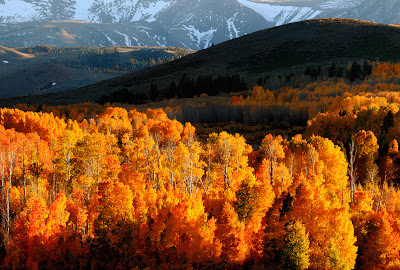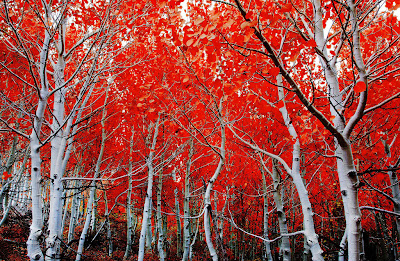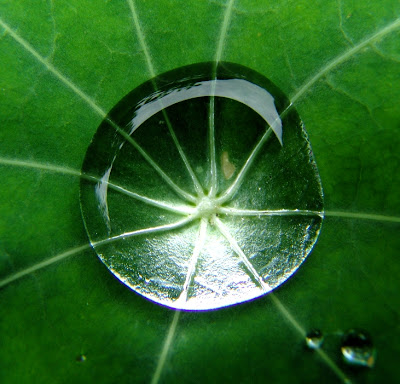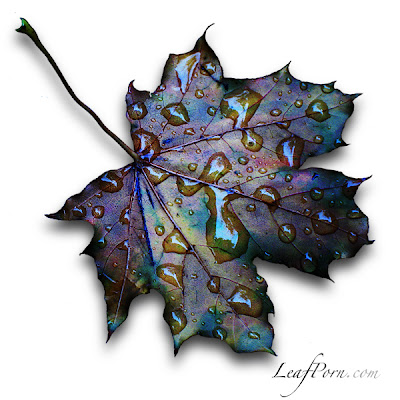 |
| Photo by: Edgar Barany |
Anyone familiar with natural science will vouch that green leaves are the primary source of the food-cycle; where water and minerals combine together to make carbohydrates in the presence of sunlight; in other words the whole animal kingdom is indebted to green leaves and the substance present in it by name chlorophyll. For photographers too plant leaves present numerous opportunities for capturing stunning images out of these leaves; whether they are fresh or dry; green yellow or whatever their color or shape.
For an inspired photographer; leaves are a very interesting subject, as they come in such intricate and diverse patterns. There are hundreds of thousands of different kinds of leaves, in fact no two leaves are alike; they differ not only based on genera or family of the plant but also in size, shape, color, texture, pattern and in many other ways. On closer observation it can be noticed that even each leaf of the same plant differs from the other; and these variations become overwhelming when seasons change.
 |
| Photo by: Lee Tzung-Tze |
Each and every photographer strives to capture images that stand out in the crowd; some skills and a lot of knowledge of the nuances of the art alone can fulfill this wish. There are many great ways of capturing leaves in a photograph, you may picture them in their natural state fixed on a branch, falling down, lying scattered on ground or streets etc. Possibilities for photographing leaves are limited only by your imagination, creativity and skill and not by varieties they present.
This article is intended to be a guide for photographing leaves at their best; and it includes some very useful tips to get your leaf photography up to speed.
Perfect Lighting for Photographing Foliage
 |
| Photo by: ™ Pacheco |
The best lighting for photographing leaves is during sunrise and sunset, otherwise called the golden hours and also the light available on an overcast day. Direct sunlight on a bright day is not recommended as the light may be harsh and shadows unpleasant.
The two preferred lighting namely light during golden hours and light on an overcast day have very different characteristics and hence produce very different effect. A photographer should have a good understanding of them so as to use them for his/her advantage.
Light on an Overcast Day
On an overcast day, the clouds act as a huge soft-box, diffusing the sunlight, producing very soft light which envelops the subject from all angles. It results in soft shadows, saturated colours and lots of details. The Omni-directional effect of light at that time even creates a very romantic feel to the images.
Light during Golden Hour
During golden hours, the sun is at an angle to the earth and its rays travel greater distance to reach the earth resulting in a unidirectional light; that produces longer shadows.Since the sunrays travel more distance through the earth’s atmosphere; rays of shorter wave lengths are filtered out and what remains is light that has a slightly warm with a golden tint to it. This warm light is ideal for getting very saturated colors.
White Balance Settings for Photographing Leaves
 |
| Photo by: Edgar Barany |
Depending upon the lighting conditions and the type of leaves being photographed, it is essential to set the camera’s white balance properly for best results. Auto White Balance Mode is not recommended for photographing leaves as it in most cases produce subdued colors.
Firstly about the type of leaves being photographed; are they green, yellow, oranges, reds, the autumn or fall variety? To get perfect results the photographer should consider the color of the leaves and also the color of the lighting.
Light during an overcast day generally has a bluish cast; if you are photographing autumn or fall leaves which have warm colors, then the blue cast of the light will clash with the warm colors of the leaves resulting in less than perfect images. In such a scenario it is essential to set your white balance settings using the Custom White Balance feature of the camera so as to render accurate colors in your photographs.
Photographing leaves during magic hours call for a different approach to white balance. Light during magic hour has a golden cast. And this is perfect to enhance the colors of autumn/fall leaves. So to preserve the golden tint one has to use either a white balance mode which enhances the warm tones like shade or cloudy or set the white balance manually using Kelvin at a value that enhances warmth.
Use a Polarizing Filter
 |
| Photo by: Sylban Mably |
Light being reflected off the leaves surface dilutes their color, this is especially so when the leaves you are photographing are wet. Using of a polarizing filter will help you remove these unwanted reflections thus enhancing the photograph by letting you to capture more saturated colors and well defined detail. Please refer our previous article titled ‘How to maximize the effect of your polarizing filter’ for better use of it.
Which Leaf to Pick?
 |
| Photo by: Martin Gommel |
For photographing flowers it is better to pick the best specimen, but when a leaf is your subject; an imperfection could add an element of interest in to the photograph (depends upon the final intent). Choose leaves that have interesting patterns, textures, shapes, sizes, color etc. ask yourselves a simple question, what is it about the leaf that makes it so special? Is it the color, pattern, texture or the presence of large veins? Once you know the answer, think of ways to how best you could highlight it.
Avoid Busy Backgrounds
 |
| Photo by: Edgar Barany |
Cluttered background with objects competing for the viewers’ attention is a no no; instead look for clean simple background that will make your subject stand out in the frame, pulling the viewers’ attention on to it. Refer ‘How to make your subject stand out from the background’ it will be of much use for this purpose.
Shoot Early During the Day
 |
| Photo by: ™ Pacheco |
Early morning is the time when the air is clean; also chances of strong winds during that time are less add golden hour lighting to it and the combination makes it the ideal time for photographing leaves.
Avoid Windy Days
 |
| Photo by: Margot Gabel |
It is very difficult to get sharp shots of leaves if there is wind; even a small breeze can spoil your frame. Only when the air is perfectly still; go for the shot. Of course thereare shortcuts like; when in bright conditions you could get away by using faster shutter speeds and in dull conditions; make use of your flash to freeze the movement etc. Why go for those hassles? Just wait for a calm and windless day; it would be much simple.
Add Props
 |
| Photo by: Zen Sutherland |
Props such as water drops that simulate the effect of dew or rain could make your shot more interesting to the viewer.
Modify Your Leaves
Do something with the leaf itself; that may help to grab the viewers’ attention. Capture them by cutting it into strips, write on it, tear it, bend it, fold it, weave it, roll it, freeze it, dry it out in the sun, press it and wrap it around something.
Leaves have intricately designed venation's in them; let some leaves ret in water for some days and wash off the decayed parts; dry it to highlight the venation; photograph them; you have very informative as well as amusing skeleton for weird images. Do it carefully or else you might end up with a very unappealing shot of mush.
Use Depth of Field as a Creative Tool
 |
| Photo by: Amelie |
Depth of field can provide focus on only a few leaves while keeping the other leaves blurred and therefore less distracting in the background. Or you could selective focus on the highlight (most interesting part) of the leaf and blur out everything else.
Some General Foliage Photography Tips
 |
| Green Leaf |
- Look for color contrasts, such as bright red trees against an evergreen background or deep blue skies.
- Use a telephoto lens to pick out detail in the landscape. Use wideangle lenses when there is a lot of color in the scene.
- Care must be taken while using a polarizing filter when lens is wideangle and the sky is blue. With wide lenses, you may see differing amounts of saturation in the sky across the frame which looks unreal. It occurs because the sky isn't evenly polarized. While using a long lens (and a corresponding small angle of view), this effect becomes less noticeable.
- If the sky is grey and overcast you can still get good foliage shots, but you’d want to minimize the amount of sky in your frame; zoom in on the trees and their leaves; we’ll include the sky when it is clear and blue!
- If you camera allows you to vary saturation settings, slightly increasing the saturation settings will help make colors rich.
- For point and shoot users; set camera to the vivid mode for making colors rich.
Photograph Leaves Indoors
 |
| Photo by: undergroundbastard |
The best thing about leaves is that they are neither bulky nor heavy; you could always carry your specimens back home and shoot it in a controlled environment. While shooting leaves indoors you have complete control over the lighting and there is no hassle like wind. It will not be such a bad idea to clean the leaves before photographing them. Brush or wash off any dirt, unless you want them to look dirty!
Related Reading
- How to Photographs Fireworks - Tips for Photographing Fireworks Displays
- How to Capture Motion Blur in Photography - Tips for Photographing Moving Subjects
- How to Get Shallow Depth of Field in Your Digital Photos
- How to Recover Deleted Photos From Camera's Memory Card
- CandleLight Photography - How to Photograph In Candle Light
Post a Comment